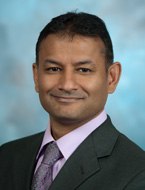Successful management of gastrojejunal strictures after gastric bypass: is timing important? Journal Article
Local Library Link: Find It @ Loyola
| Authors: | Yimcharoen, P.; Heneghan, H.; Chand, B; Talarico, J. A.; Tariq, N.; Kroh, M; Brethauer, S. A. |
| Article Title: | Successful management of gastrojejunal strictures after gastric bypass: is timing important? |
| Abstract: | BACKGROUND: Endoscopic balloon dilation is an effective treatment of gastrojejunal (GJ) strictures after Roux-en-Y gastric bypass (RYGB), although its success might depend on the point at which they occur postoperatively. We hypothesized that "late" strictures (>/=90 d after RYGB) might be less amenable to balloon dilations than "early" strictures occurring within 90 days postoperatively. METHODS: A review of a prospectively maintained database at a bariatric center was conducted to identify all patients who underwent upper endoscopy (UE) for investigation of gastrointestinal symptoms after RYGB. Those who were diagnosed with a GJ anastomotic stricture at endoscopy were selected for additional evaluation. The patients were classified into 1 of 3 groups, according to the point at which they presented with stricture symptoms (group 1, 0-90 d after RYGB; group 2, 91-365 d after RYGB; and group 3, >1 yr after RYGB). All strictures were dilated using through-the-scope controlled radial expansion balloons. RESULTS: From July 2006 to July 2009, 929 RYGB procedures were performed in our bariatric unit. Our surgical endoscopy team performs approximately 1500 UE investigations annually. Most investigations were for preoperative assessment of bariatric patients; however, a proportion is indicated for the investigation of postoperative weight regain and complications of foregut surgery, as well as endoluminal surgery. In the present study period, 591 gastric bypass patients underwent UE for investigation of gastrointestinal symptoms postoperatively. In total, 72 patients were diagnosed with a symptomatic GJ anastomotic stricture and underwent balloon dilation. Almost two thirds (63.9%) of the dilations were performed within 90 days after RYGB; 98% of these "early" strictures resolved with dilation. In comparison, of the "late" strictures, only 61% (16 of 26 patients) resolved and 38.5% (n = 10) required revisional surgery for additional management. CONCLUSION: Endoscopic balloon dilation is effective in treating early GJ strictures after RYGB. Late strictures are less amenable to endoscopic dilation and often require revisional surgery. Patients presenting with upper gastrointestinal symptoms after RYGB warrant early investigation with UE to investigate for a GJ stricture, which if present, should be promptly dilated. |
| Journal Title: | Surgery for obesity and related diseases : official journal of the American Society for Bariatric Surgery |
| Volume: | 8 |
| Issue: | 2 |
| ISSN: | 1878-7533; 1550-7289 |
| Publisher: | Elsevier Inc |
| Journal Place: | United States |
| Date Published: | 2012 |
| Start Page: | 151 |
| End Page: | 157 |
| Language: | eng |
| DOI/URL: | |
| Notes: | LR: 20121115; CI: Copyright A(c) 2012; JID: 101233161; 2010/07/23 [received]; 2011/01/12 [revised]; 2011/01/28 [accepted]; 2011/03/11 [aheadofprint]; ppublish |
LUC Authors
-
 48
48Chand
Related LUC Article
